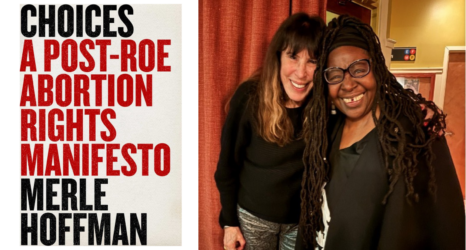In this turbulent time of political changes, women’s rights, social, racial, gender and economic inequality, global conflicts, cultural instability, reproductive choice/health care issues, and environmental challenges of overconsumption and resource scarcity–how do we effect positive change through art?
In the exhibition “Vision: An Artists Perspective,” self-identified women artists responded to this question.
UniteWomen partnered up with Gutfreund Cornett Art to create a space for self-identified women artists to engage in a dialogue about major social themes and how we can envision an empowering future. Vision: An Artists Perspective is rooted in a strong feminist foundation: the exhibition uses art to advocate for political, economic, and social equality for all. The culturally, ethnically, and generationally diverse breadth of artists allows each piece to offer a unique perspective on social justice issues. These artists explore topics like violence against women, reproductive rights, identity and gender roles, beauty and sexuality, aging and illness, empowerment, and the human condition.
While spanning genres and artistic mediums, all of the art in Vision communicates raw emotion – but then, makes you step back and think about the implications of your immediate response with an activist framework. Pieces can be subversive, jarring. They can also be cheeky and humorous. Art ranges from pieces like “Disorder” by Lynn Dau, a metallic sculpture that is a violent explosion of kitchen appliances, to “You Stupid Cunt” by Spooky Boobs Collective, a Charlotte-Gilman-inspired Victorian wallpaper decorated with vulva shaped patterns and the decoratively scripted word “cunt.”
Of the 35 pieces, here are the six that received Special Recognition:
[stackerdecks_id]MzhzNDIzMQ==[/stackerdecks_id]
In the pamphlet for “Vision,” the curators discuss their purposeful choice to use the term “self-identified women artists.” They explain that this term is connected to the feminist core of the show:
This term acknowledges that gender identification is not limited to biology. By sharing our perspectives and experiences, divisiveness can grow into solidarity, understanding and strength amidst all of the myth and muddiness of social policies, press and statements from misogynist organizations.
The curators also explain the present-day relevance and need for women-only art shows. There is still a major lack of gallery representation for women artists. While there has been some progress after American art historian Linda Nochlin asked “Why have there been no great women artists?” in 1971, women artists are still vastly underrepresented in art history and in the contemporary art world.
The slight movement forward for women artists is manifested in H.W. Janson’s most recent edition of History of Art, the widely accepted art history cannon (which has been criticized for including Euro-centric art by really only Western, white men); out of nearly one thousand pages, the number of women represented has risen from zero in the 1980s, to only 27 today. In addition, a recent study focusing on the top contemporary galleries around the world found that the average amount of representation is 30 percent women to 70 percent men.
“The real reason women need to be represented properly in the art world is so the world can be fully represented in art,” says art critic Jonathan Jones in a review for an all-women show.
Vision: An Artists Perspective will be showing at Kaleid Gallery in San Jose, California until July 29.





